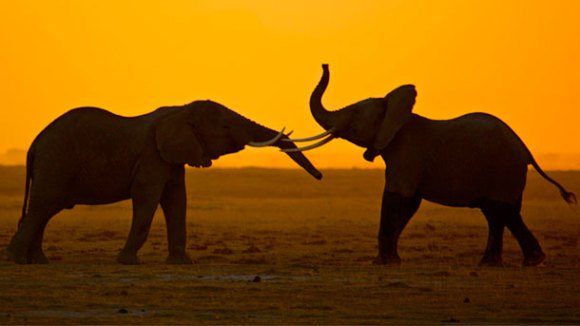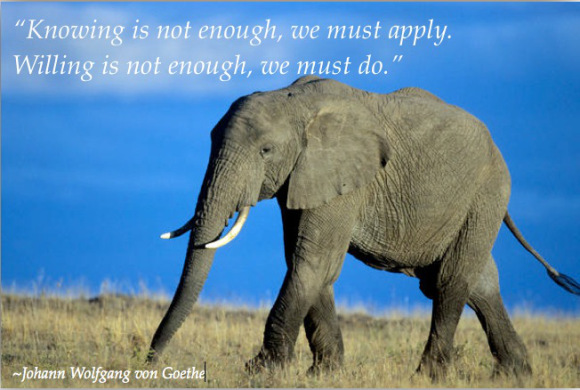After watching National Geographic’s Battle for the Elephants last week, people around the world know about the plight of elephants. Here are some of the numbers facts that stood out to me, please share what stood out to you below. (Didn’t see the episode? CLICK HERE for the full length version from PBS)
NUMBERS TO REMEMBER:
80% of the population in China own 1 or more pieces of ivory. Remember, China’s population 1.3 billion and growing.
70 elephants are poached each day.
Each day, 60,000 containers travel from Mombasa to Hong Kong over 5,000 miles of Indian ocean. But customs agents in China inspect fewer than 1%. It’s a smugglers dream.
Recently there was a bust in the port of China with 8,000 lbs of ivory found (equivalent to 600 elephants, which is less than 3% of the 25,000 elephants that CITES estimated were killed in 2012 alone.)
In 1979 - 1.3 million elephants in Africa.In 1800 - there were 26 million elephants in Africa.
In 1989 - 600,000 elephants in Africa.
Today it is estimated there are only 400,000 elephants in Africa.
In 1999 and 2008, CITES allowed two legal sales of stockpiled ivory.
20 years ago, ivory was banned. In China, ivory sellers claim their ivory comes from pre-ban ivory. According to the IFAW, 60% of ivory sold in China is legal. Due to the enormous amount of ivory in China, this means that 84% of items on display could be illegal.
In China, ivory pieces sell for $20,000, $50,000, $200,00, $600,000 and more.
In Kenya, the Big Life Foundation offers locals training and jobs as park rangers to protect elephants from poachers. There are now 230 rangers from the community and in the last 18 months, only 16 elephants have been lost (compare this to the 30 a day that are being lost in Tanzania: in fact, 30,000 elephants have been lost here, 40% of the elephant population).
The largest game reserve in Africa, Selous, is home to 60% of Tanzania’s elephants, but guides have noted a disturbing trend of poaching in the last ten years as can be seen in the elephants behavior.
In Tanzania, 20 kilos of ivory sells for about $8,000. In China, that same ivory sells for over $40,000.
In Tanzania there are 90 metric tons of ivory in reserve. It is the largest known cash of raw ivory in the world. What should one of the poorest nations in the world (Tanzania) do with this ivory?
CITES meets in March 2013 to discuss the issue of ivory poaching and legal sales of stockpiles. Some representatives believe that no trade means no confusion on legal and illegal ivory. Others believe having a dead elephant is a valuable resource that should not be thrown away. What will they decide this March - to ban ivory altogether, or continue to allow legal ivory to be sold?
Although these numbers seem grim, I have to believe as Aiden Hartley does, “we shouldn’t give up hope, but it is a race against time.”
To win this race, take a moment to do the following, to turn your knowledge into action:
1. SIGN the petition to the Prime Minister of Thailand asking they ban legal ivory.
2. SEND a letter to John Kerry that asks for the United State’s support on this issue.
3. SHARE this blog with your family and friends. Education is key to raising awareness. Once people know, then they can begin to do.



We shared a link to your post on our facebook page at: http://www.facebook.com/TheAnimalSpirits
Thank you!
BREAKING NEWS FROM CITES regarding the Thailand’s stand on the ivory trade: http://www.bbc.co.uk/news/science-environment-21646863
[...] clips from National Geographic explaining who the world’s ivory villain is and my personal thoughts from the world-wide ivory battle. Finally, I’ve explored how people of many backgrounds and beliefs all seem to have one [...]